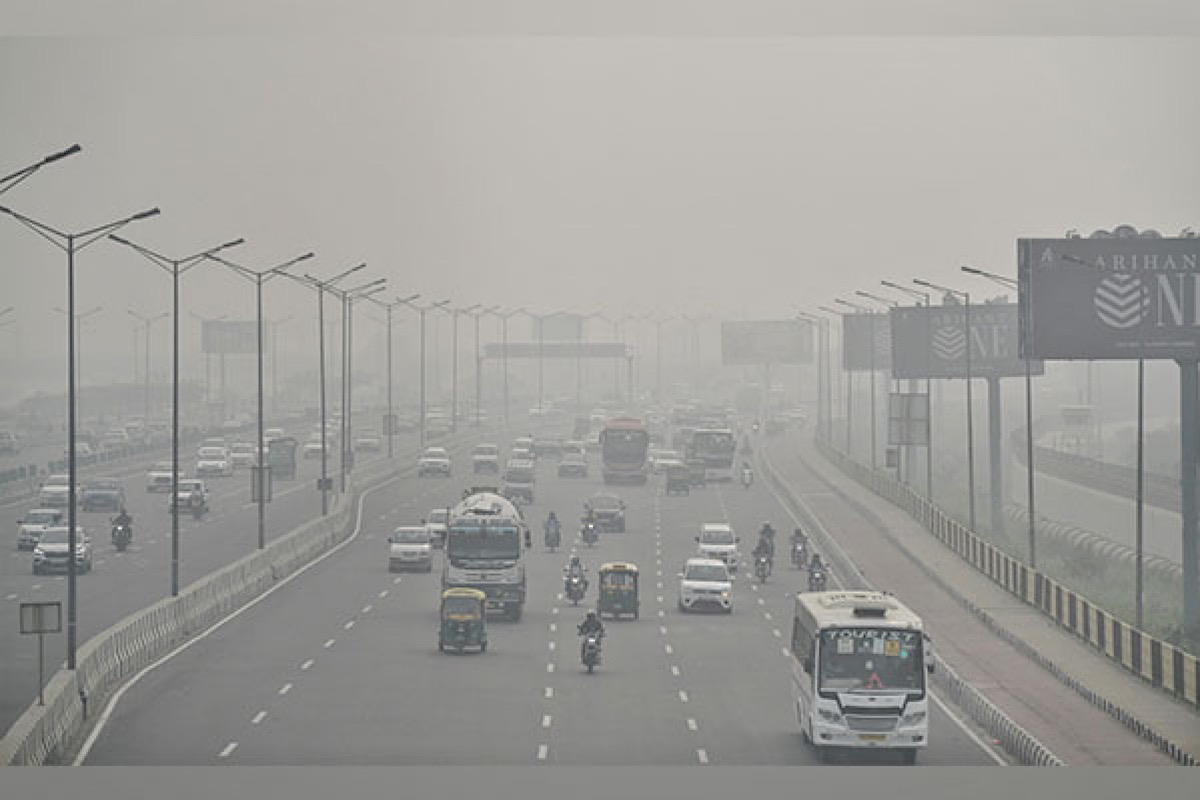Delhi PWD Minister inspects development projects
During the inspection, Minister Pravesh Verma took stock of three important projects. The first is from Bhoro Marg to Sarai Kale Khan where road strengthening work is going on till the ring road.
At least thrice this winter, the government acting through the Committee on Air Quality Management imposed restrictions on operation of those diesel and petrol vehicles in Delhi and the National Capital Territory region that were manufactured under emission norms current on the day they rolled out of factories but which have been overtaken by more stringent standards.

Air pollution (Photo:ANI)
At least thrice this winter, the government acting through the Committee on Air Quality Management imposed restrictions on operation of those diesel and petrol vehicles in Delhi and the National Capital Territory region that were manufactured under emission norms current on the day they rolled out of factories but which have been overtaken by more stringent standards. The bans were blanket and to an extent presumptive in that they were based on the assumption that cars of a certain vintage were polluters, while newer ones were not. In actual terms, the assumption was that petrol vehicles manufactured up to six years ago and diesel vehicles that rolled out of factories up to three years ago made the cut, while older ones did not.
Add to this the ban on diesel vehicles that are more than 10 years old and petrol vehicles that are more than 15 years old in Delhi, and the conclusion is inescapable that the polluting capacity of a vehicle is, as a matter of state policy, being arbitrarily determined by the age of vehicles, and not by measurement of their emissions. It does not require an automobile expert to point out that these presumptive norms are absurd. A poorly maintained two-year-old car can and does pollute considerably more than a well-maintained seven-year-old car does. And the only way to determine this is to submit both vehicles to pollution checks. But the authorities have plugged into the softer option, one that seems to conveniently dovetail with the larger policy of creating obsolescence where it may not be needed. At least two questions must be asked and answered? Can a country like India, which by the most optimistic projections, is limping its way to middle-income status really afford to be creating obsolescence on such a scale? Second, by having different yardsticks for measuring the lives of vehicles ~ diesel vehicles of up to 15 years of age can operate freely in other states ~ is the government not resorting to double standards wherein the health of those in say Patna is deemed less important than that of people in Delhi?
Advertisement
Mind you, the air quality in Patna is oftentimes more alarming than in the national capital. All of this lends itself to the suspicion, entirely reasonable in the circumstances, that state policy is being led by nose by the powerful automobile manufacturers’ lobby, which stands to gain the most if vehicles are forcibly replaced before they have reached the end of their productive lives. A better option would be to mandate more pollution checks as a vehicle grows older. While a one-year-old car could be subjected to an annual check, a ten-year-old car could be checked every two months. Traffic policemen could then occupy themselves with controlling Delhi’s chaotic traffic rather than check vehicle registrations. And the resources of the state could be utilized to deploy fleets of mobile pollution checking vans, which may even actually help bring down pollution levels
Advertisement
Advertisement